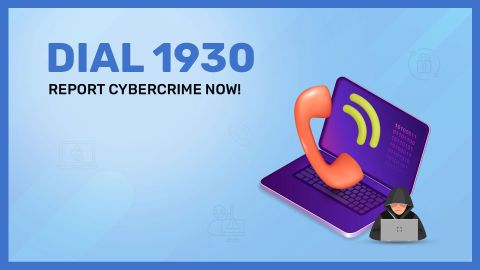The number of internet users is increasing every day. Currently, there are nearly 3.43 billion internet users across the world. Out of which, 2.28 billion people use social media networks. And Facebook is one of the leading platforms with the highest number of monthly clicks.
While social media platforms have their own set of perks, they are not entirely risk-free. As a customer, you should be wary of putting up personal information on these platforms or any website. Your personal details are equivalent to money for cybercriminals who can use these details to steal your identity and access your bank account for conducting online banking fraud. The scammer can also obtain credit cards or loans using the details and ruin your credit score. Hence, it becomes your responsibility to practice caution and share your information wisely, as stalking, identity theft, harassment, and fraud are always possible.
What are the risks, and how does fraud happen?
Whenever you access the internet or any social media platform, you leave behind traces. For instance, anyone using Facebook feeds a lot of information to the Silicon Valley giant about their age, name, interests, location, favourite music/ games/ brands, etc., which is enough to leave behind a huge digital footprint. If you read the terms and conditions carefully, you will see most of these social media platforms have the authority to sell public profile data to their advertising partners.
However, many people do not see this as a problem because the information is used for personalised advertising. The data evaluation helps to facilitate the searching process of consumer goods. But, the information may end up in the hands of criminals, and hence, you should be careful as there are no chances for you to know how far the information can reach. These criminals are modern con artists who are extremely talented at deceiving their victims to get their money.
These con artists use various methods to gain your trust using a false identity. Either they pretend to be a representative of a bank or company or impersonate a friend or family member to dupe you. Here are some common methods used by these hackers:
Baiting
This is a very commonly used hacking technique used by cybercriminals. Using this approach, they offer a free download and ask for account log-in information in return. This information can be misused to access someone’s email, which serves as a source for accessing other personal information.
Quid Pro Quo
In this method, the fraudster promises to offer certain services or benefits in return for specific information or access. Generally, the person impersonates an IT engineer and dupes the user by promising to provide technical assistance. For instance, if the scammer pretends to be a technician fixing common bugs, they might ask you to turn off the window’s firewall and then install an update. This update may be a virus or spyware.
Phishing
A phishing attack is when the fraudster takes advantage of the victim’s fear and gains their trust by impersonating the authorities. Suppose you receive an email that features texts and designs resembling the design of your bank or any renowned service provider. Also, it stays linked to a similar website of the respected authority. When you enter your details, it gets forwarded to the fraudsters who can use it to commit crimes or avail loans in your name.
How to ensure your safety?
These practices can help you safeguard your money and transactions:
Personal information: You should always be careful while posting or sharing anything online, as many people can see it. The risk is higher when you are sharing these sensitive details with someone you do not know personally. Sensitive information includes your credit or debit card details, phone number, credit status, address, passwords, loan numbers, passport information, social security numbers, PINs, insurance policy numbers, and other bank account information.
Updates: It is crucial to ensure that your system is completely up-to-date for complete fraud protection. Updated systems ensure better standards of security.
Educate your children: Talk to your children about online scams. Educate them about the importance of not posting personal or sensitive information on the internet. Although you should not invade anybody’s privacy, it is always beneficial to keep track of your child’s browser history.
Shopping: Shop online only from trusted websites. If a website does not have a secure check-out using ‘HTTPS’, avoid using them. Make sure to read the address line properly while entering the credit or debit card information. Choose a different shopping platform if the ‘S’ is missing from ‘HTTPS’ in the address line.
What to do if you have been defrauded?
If you feel that your personal information was leaked, you can take a few steps to ensure your safety. Depending on the information leaked, you have to take the necessary steps to prevent further damage. For instance, if the log-in credentials have been compromised, change the password for the respective platform immediately. Also, if you use that password for other sites, change them as well. If information related to your bank account is compromised, get in touch with the bank immediately to avoid financial fraud. Do not wait till your account is debited, even when you did not make a transaction. If necessary, file a complaint in your closest police station and contact your local cyber cell to report the incident immediately.
Conclusion
No matter what, you should always be very careful while using the internet, given the different types of frauds taking place across the globe. Get in touch with the authorities immediately if you feel your data has been leaked.
DISCLAIMER:
While care is taken to update the information, products, and services included in or available on our website and related platforms/websites, there may be inadvertent inaccuracies or typographical errors or delays in updating the information. The material contained in this site, and on associated web pages, is for reference and general information purpose and the details mentioned in the respective product/service document shall prevail in case of any inconsistency. Subscribers and users should seek professional advice before acting on the basis of the information contained herein. Please take an informed decision with respect to any product or service after going through the relevant product/service document and applicable terms and conditions. In case any inconsistencies observed, please click on reach us.
*Terms and conditions apply








